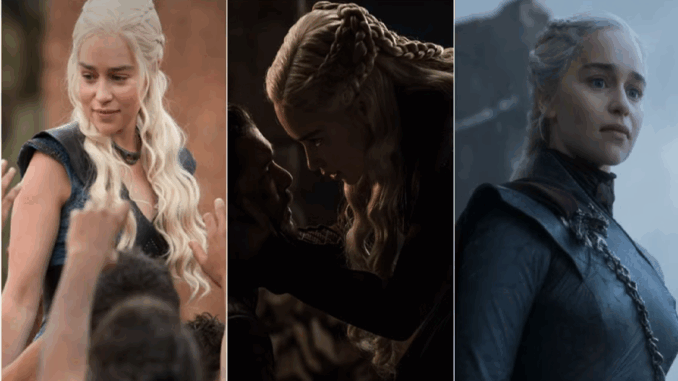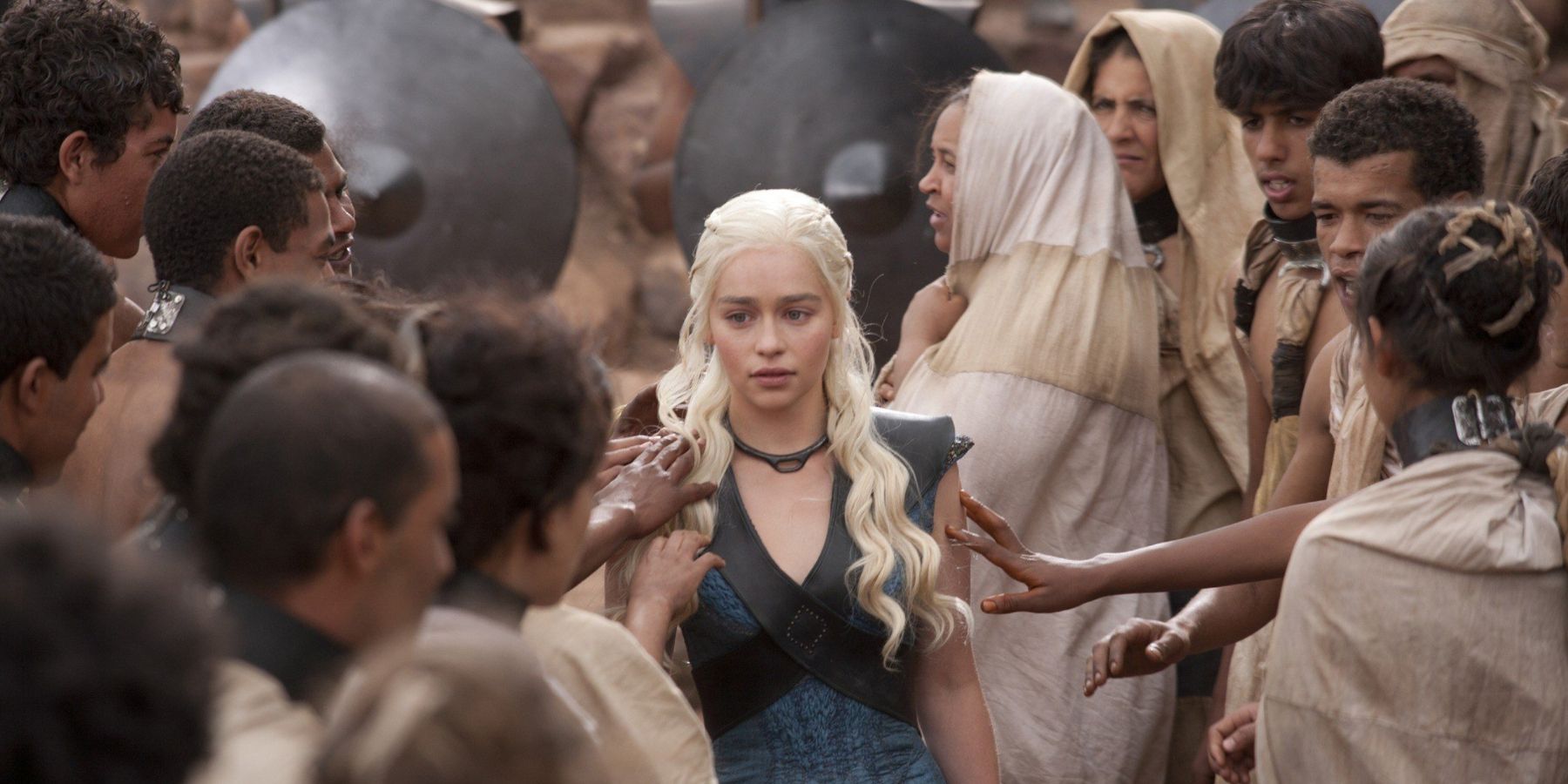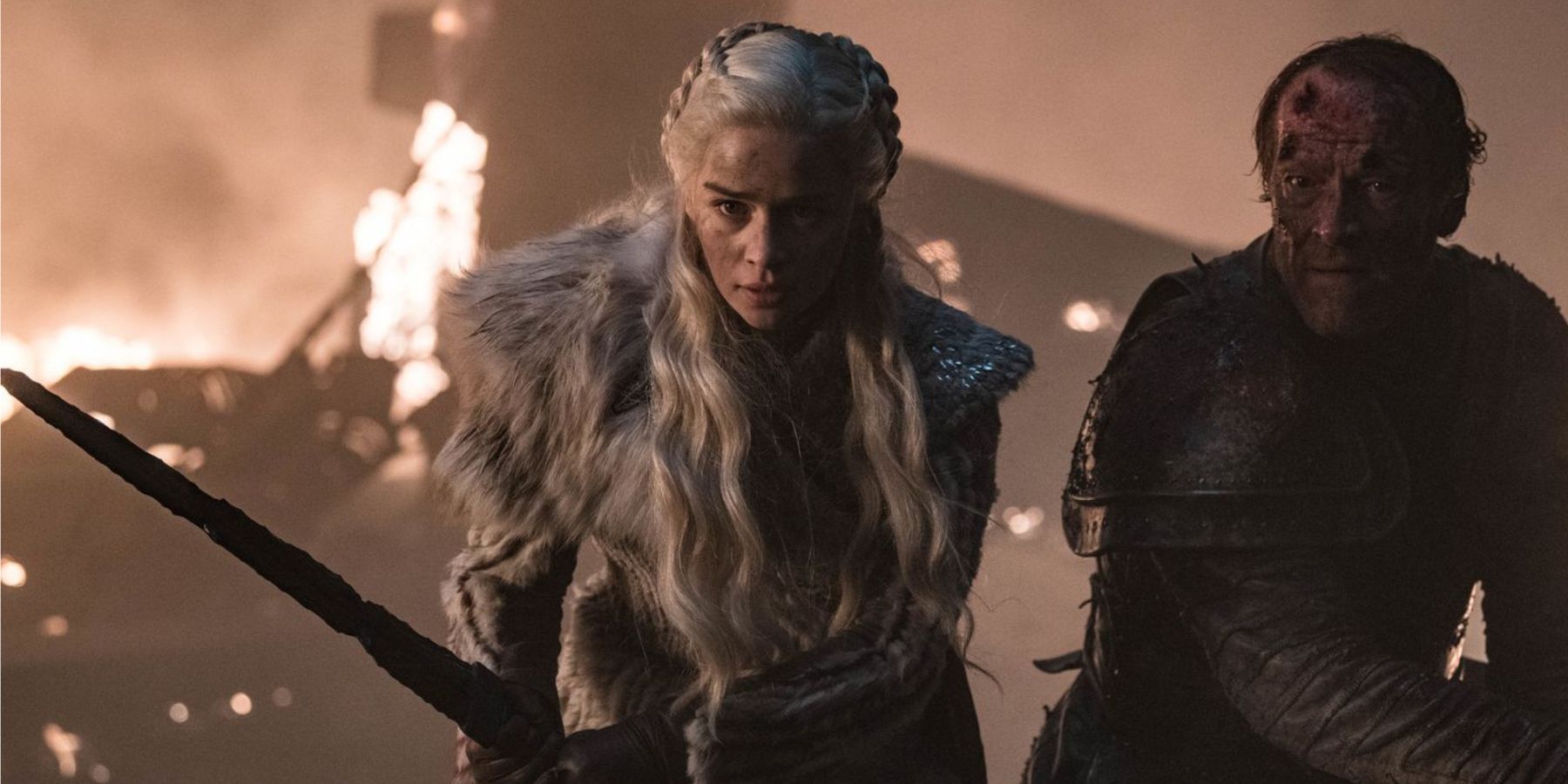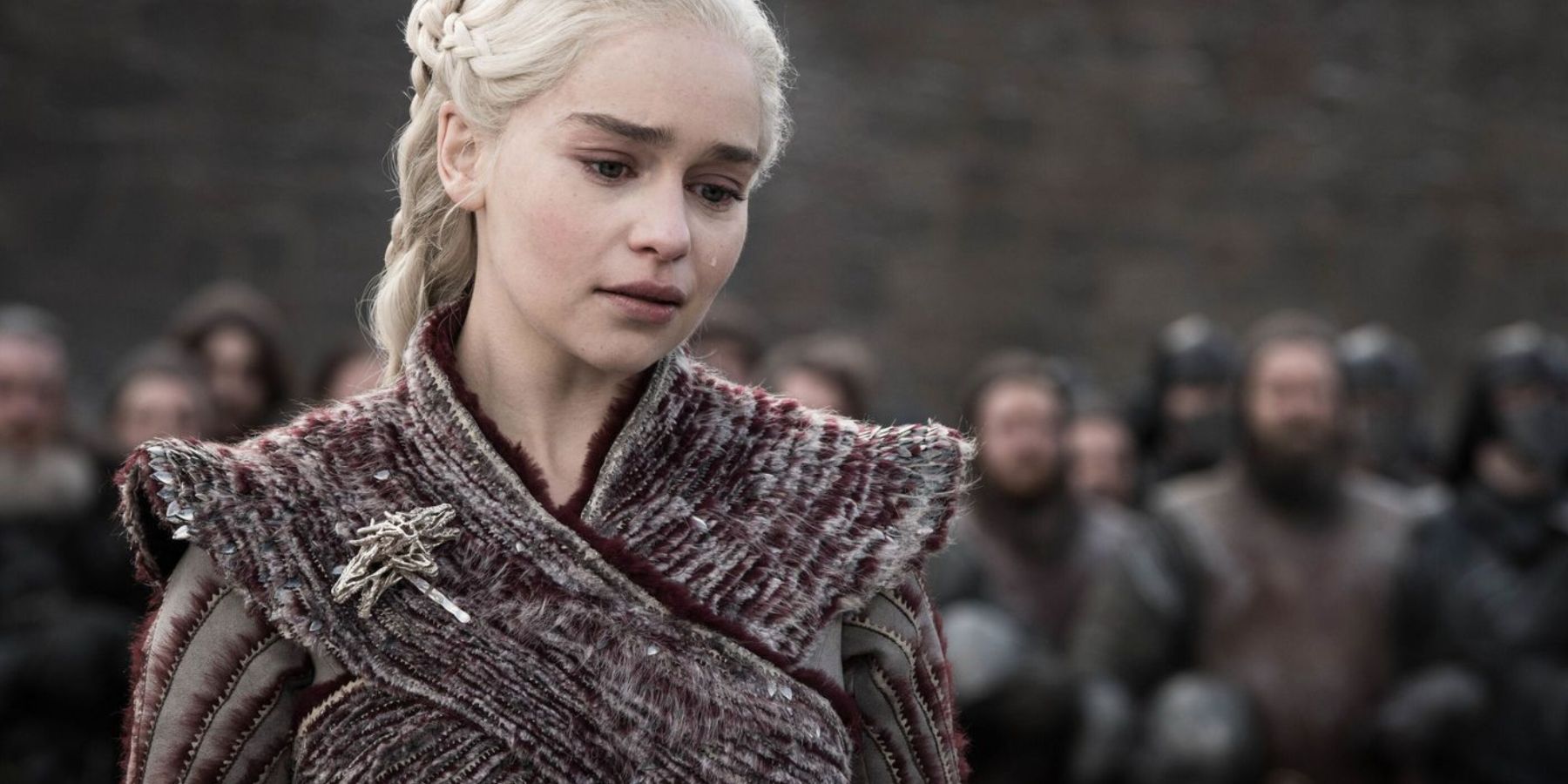
Daenerys proudly called herself “Khaleesi of the Dothraki,” forgave her brother, the Beggar King Viserys repeatedly for his abusive behavior, until one day she had enough and watched Drogo pout molten gold over his head. Because she had political acumen, she learned to command his Khalasar within no time. In Game of Thrones season 1, episode 3, “Lord Snow,” she ordered the horde to halt while traversing the Dothraki Sea after seeing a slave being abused. She was implicitly sympathetic when Jorah Mormont informed her how the Dothraki acquired slaves. For this countless other reasons, her descent into the Mad Queen who burned King’s Landing in Game of Thrones’ penultimate episode is without rhyme or reason.
Daenerys Is the Breaker Of Chains
Daenerys was left with Jorah Mormont, and a few Dothraki loyalists by her side. She took the three dragon eggs that she acquired as a wedding gift from the Illyrio and walked into the flames of Drogo’s funeral pyre. By dawn, she rose like phoenix from ashes with her dragon hatchlings. The pivotal moment in Game of Thrones season 1, episode 10, “Fire and Blood” marked the birth of the Mother of Dragons. Daenerys traversed vast lands from season 2 until she set sail for Westeros in Game of Thrones season 6, episode 10 “Winds of Winter.”
In the Sack of Astapor, Daenerys commanded her newly-acquired Unsullied soldiers to slay the masters and liberate the slaves. She gave the Unsullied a choice to serve her as free men or leave. Ser Jorah Mormont and Ser Barristan Selmy (who served in the Kingsguard of Aerys II Targaryen) were awed by Daenerys’ benevolence and fiery personality. The slave trader, Kraznys mo Nakloz’s translator, Missandei also chose to accompany her knowing that Daenerys was going to war. Missandei showed the Mother of Dragons unwavering loyalty not because of her last name but because she believed in her until her end. She was executed in Game of Thrones season 8, episode 4 “The Last of the Starks.”
Daenerys’ Selfless Acts
Daenerys ruled Meereen as Queen and saw to it that she administered justice. She imprisoned her two full-grown dragons, Rhaegal and Viserion within the Great Pyramid of Meereen after Drogon burned a three-year-old girl. She did so not just to appease the people of Meereen but to keep her subjects out of harm’s way. She quelled the insurgency of the Sons of the Harpy and acted on her dream of breaking the wheel of oppression. With each season, Daenerys grew in stature and earned the faith of Westerosi allies, namely the Ironborn, the Dornishmen, and the Reachmen. She found devotion in Tywin Lannister’s hated son, Tyrion, whom she named Hand of the Queen. She also had the confidence of the cunning diplomat, Lord Varys. Her dragons meanwhile grew into full-sized, disciplined serpentine beats.
Daenerys’ Descent Into Madness
Daenerys’ conquest was sidetracked after meeting Jon. She declared a temporary truce with Cersei Lannister and traveled to the North to fight the Great War. She made the biggest contribution to the war, in that, she gave her armies, and her dragons to protect the North. Like a true ruler, she protected Winterfell, while the trueborn daughter of Ned Stark, Sansa hid in the crypts. Her dragons and armies proved pivotal in Game of Thrones season 8, episode 3 “The Long Night,” and yet she gained nothing in return. While Jon was being hailed by the Northerners, everyone conveniently forgot about her sacrifices.
The writing failed to explain what snapped inside her and how she transformed into the Mad Queen who burned men, women, and children all the same. It’s unfair how Jon was able to walk up to an unguarded Queen of the Seven Kingdoms, murder her, and be sent to the Wall for regicide. If all of these developments were given adequate time, they’d still not be enough to justify Daenerys’ descent into madness. Hadn’t the Mad King earned his name, and weren’t Cersei and Joffrey cruel from the get-go? Truth is, Game of Thrones sacrificed Daenerys’ character for shock value, with the writing being nothing but counter-intuitive.



